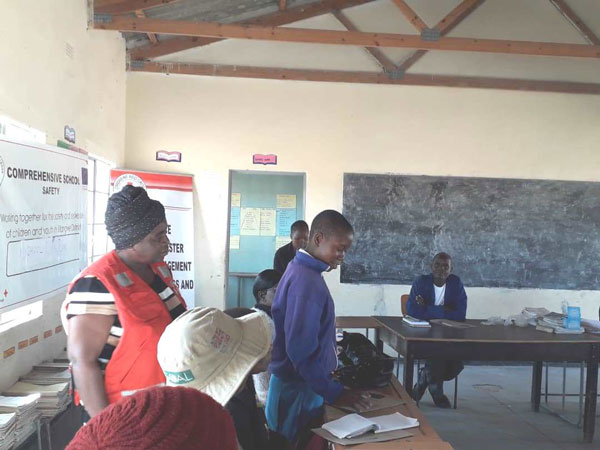
By Style Reporter
The Zimbabwe Red Cross Society (ZRCS) is intensifying projects designed to enhance national disaster risk management capacities and community resilience through opening up spaces for social participation among community members.
Running under the title, Resilience through Disaster Response Management: Cash Preparedness and Comprehensive School Safety, the project is being done in Mangwe district in Matabeleland South province and is supported by the Finnish Red Cross, British Red Cross, the World Food Programme, and the European Union — Humanitarian Aid.
Matabeleland South province is a heterogeneous area with potentially destructive natural and socio-natural hazards being the order of the day.
Hailstorms, strong winds and floods are recurrent, particularly during the rainy season, creating high levels of risk. This is exacerbated by the region’s susceptibility to such weather vagaries and dearth of spaces for social participation in development processes.
ZRCS has identified 10 schools in Mangwe district where it is running a programme under the banner School Risk Assessment.
Speaking on the sidelines of a disaster risk management plan development meeting at Kahlu Primary School in Mangwe district on Friday, ZRCS Matabeleland South manager Siphiwethina Tshuma said the School Risk Assessment was meant to help schools take action to manage risks, thereby contributing to a culture of prevention.
“ZRCS is supporting 10 highly-vulnerable schools in Mangwe district to develop enhanced disaster/emergency preparedness capacities and reduce risks associated with recurrent hazards such as storms, floods and drought. This in turn will contribute to building the resilience of the student’s home communities,” Tshuma said.
- Chamisa under fire over US$120K donation
- Mavhunga puts DeMbare into Chibuku quarterfinals
- Pension funds bet on Cabora Bassa oilfields
- Councils defy govt fire tender directive
Keep Reading
“The integration of disaster risk management in the education sector and communities is crucial in order to increase awareness of the effects and causes of disasters.”
ZRCS Echo project coordinator Tapiwa Chadoka said the School Risk Assessment was more of engaging and participatory on the part of students.
“It is a process of self-reflection and learning [awareness-raising] led by the members of the student community itself; placing a strong focus on the views and expectations of the students regardless of their age,” said Chadoka.
“The School Risk Assessment will allow schools to later design well-informed school disaster risk reduction plans and contingency plans,” he said.
Chadoka said the other component of the programme, Cash Preparedness, was meant to strengthen resources and capacity for programming by mobilising resources and personnel capacity development, including simulation exercise to test and enhance the efficacy of community resources.











